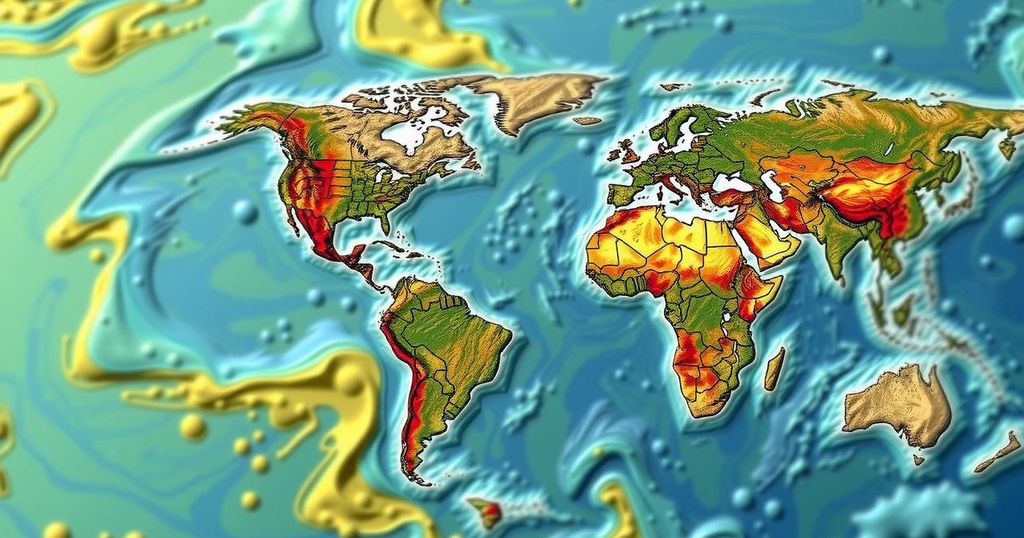Modeling Research Suggests El Niño Oscillation Dates Back Over 250 Million Years
A study reveals that the El Niño oscillation, a critical climate phenomenon affecting global weather patterns, is at least 250 million years old, often exhibiting greater intensity in the past compared to today. The research conducted by Duke University utilized advanced climate modeling techniques, uncovering the significant impact of atmospheric conditions alongside ocean temperatures on the oscillation’s strength throughout history.
Recent modeling experiments suggest that the El Niño phenomenon—characterized by a significant warm water body in the tropical Pacific Ocean with global repercussions on rainfall patterns—has existed for approximately 250 million years. Researchers from Duke University have demonstrated through a study published in the Proceedings of the National Academy of Sciences that the oscillation between El Niño and its cooler counterpart, La Niña, likely exhibited greater intensity in ancient climates than it does today. According to Shineng Hu, an assistant professor of climate dynamics at Duke University, the experiments show robust evidence of an active El Niño Southern Oscillation (ENSO) across ancient epochs, often demonstrating greater strength than contemporary patterns. The research employed a highly sophisticated climate modeling tool similar to that utilized by the Intergovernmental Panel on Climate Change (IPCC) but ran it backward in time to analyze climatic conditions from 250 million years ago. The study was constrained to examining intervals of 10 million years due to the computational demands, resulting in 26 distinct climate model slices. The findings revealed that variations in the ocean’s thermal structure and the influence of surface atmospheric conditions, referred to as “atmospheric noise,” play pivotal roles in the historical strength of the ENSO phenomena. Hu emphasizes the importance of both ocean temperatures and atmospheric conditions in providing insights into past climates, which could enhance future climate projections.
The El Niño-Southern Oscillation (ENSO) is a weather pattern known for its significant influence on global climate. El Niño represents a periodic warming of ocean waters in the eastern tropical Pacific, while La Niña characterizes its cooler counterpart. Both phenomena alter atmospheric conditions, consequently affecting weather patterns worldwide. Scientific understanding of ENSO has advanced through various studies; however, this particular research offers a crucial perspective on its historical context. Previously, studies focused predominantly on ocean temperatures, often overlooking the critical role of atmospheric conditions, which this research points out as equally vital. By utilizing advanced climate modeling to investigate past climatic conditions, researchers could draw comparisons between ancient and modern ENSO behaviors, improving our understanding of its long-term evolution.
The modeling study from Duke University significantly alters the understanding of the El Niño phenomenon, illustrating that its oscillation has been active for at least 250 million years, potentially with greater intensity than observed presently. Crucially, it establishes that both ocean thermal structures and atmospheric influences are integral to understanding the oscillation’s behavior in the past and for projecting future climate scenarios. As Hu aptly notes, a comprehensive grasp of historical climate variations is essential for making reliable projections about future climate conditions.
Original Source: phys.org




Post Comment